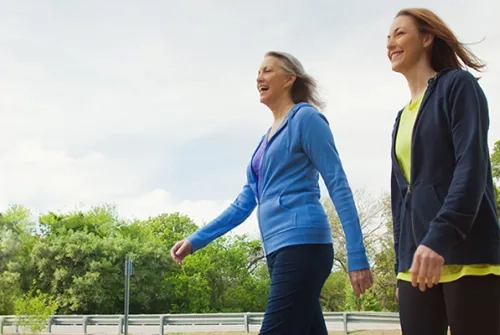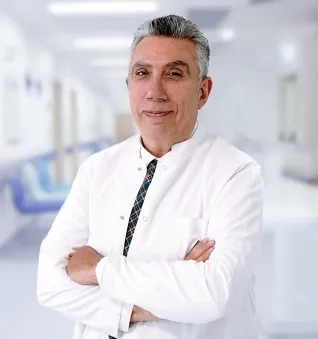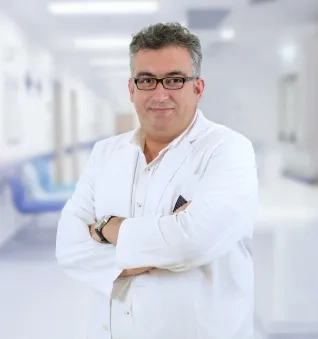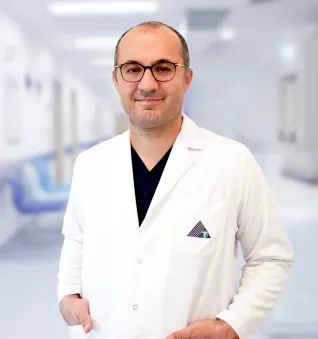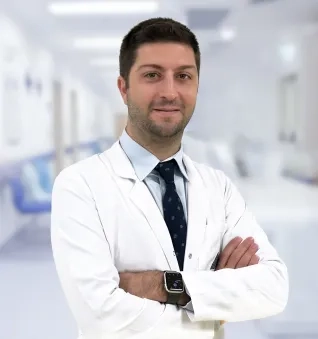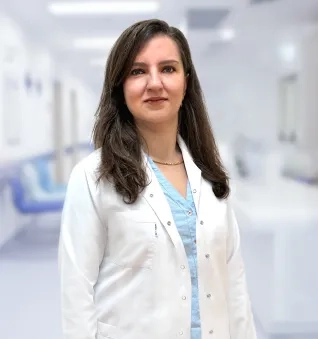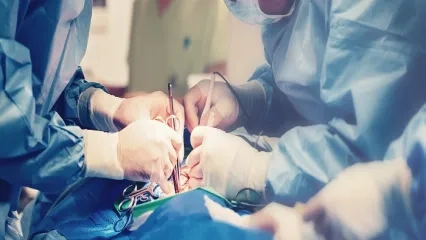Alo Yeditepe
Alo Yeditepe
Importance of Physical Exercise for Cardiovascular Patients
Taking physical exercise as part of your daily routine is important in preventing coronary artery disease, but it’s just as crucial for patients who have already undergone surgery for the disease…
In this article, Professor Muzaffer Değertekin, the Head of Yeditepe University Hospital’s Cardiology and Heart Disease Department, briefs Reference readers on the particular importance of physical exercise for cardiovascular patients.
Patients need to abandon sedentary and inactive lifestyle habits in order to avoid the recurrence of disease, especially cardiovascular conditions. Cardiovascular disease is a significant health issue in Turkey as in the rest of the world; official data show it was is cause of death of over 200,000 people in Turkey every year. Within that figure the leading single cause of death is coronary artery disease, defined as ischemic heart diseases, which take a 22% share.
So What is Ischemic Heart Disease?
Hardening of the arteries (atherosclerosis) has a negative impact on human beings as it does on many living creatures. Atherosclerosis occurs when fat in our blood combines with calcium to form a complex that collects on the inner surfaces of the arteries. More commonly referred to as hardening of the arteries, the condition is most commonly observed in medium and large blood vessels.
Hardening of the arteries can lead to various diseases depending on the organs involved. If it involves the coronary arteries feeding the heart muscles, it is defined as ischemic heart disease or coronary artery disease. Ischemic heart disease may present with different symptoms in proportion to the degree of narrowing of the aerosclerotic vessel lumen. With indications ranging from chest pain during physical effort to heart attacks, ischemic heart disease can also progress without showing any symptoms.
Who is Susceptible to Coronary Artery Disease?
Leaving aside familial predisposition and diabetes, there are five important risk factors that can be partially or entirely averted through changes in lifestyle:
1. High blood pressure
2. High levels of fat in the blood
3. Smoking
4. Obesity
5. Sedentary lifestyles
Abandoning sedentary lifestyles and adopting sports and physical activity as part of ones daily life is as important to patients who have had surgery for ischemic heart disease as it is in preventing the disease in the first place… because unfortunately hardening of the arteries will progress unless risk factors are eliminated. For this reason people who have undergone coronary bypass surgery need to give up the sedentary lifestyles and habits that constitute one of the fundamental risk factors, in order to avoid seeing the disease recur. The way to achieve this is through regular sports or physical exercise.
How Does Physical Exercise Help?
Daily physical exercise taken for the recommended period of time and in line with medical advice:
• Reduces body weight.
• Regulates blood pressure.
• Reduces bad cholesterol (LDL) levels.
• Raises good cholesterol (HDL) levels.
• Increases the body’s sensitivity to insulin. This helps people with diabetes to regulate their blood sugar.
• Has a positive impact on muscle function, increasing flexibility.
• Ensures maximum blood oxygenation.
Scientific studies have shown that regular physical activity reduces the risk of heart attacks and strokes. This applies to patients who have undergone bypass surgery; research shows that the risk of recurrence is reduced by 27% to 31% with regular physical exercise.
Can Every Coronary Bypass Patient do Physical Activity?
There are three treatment options in coronary artery disease cases, depending on the condition of the patient and the disease:
1. Medical treatment
2. Coronary balloon and/or stenting
3. Coronary bypass surgery
Just as treatment options vary in line with the patient’s condition and the progress of the disease, physical exercise programs depend on the exact treatment method, its impact and outcome. In this context there are two fundamental factors.
Interventions and surgery to treat narrowing of the coronary arteries balloon, stent and coronary bypass procedures, generally categorized under the heading “revascularization” are followed by a rehabilitation and recovery phase. While this phase may be prolonged after bypass surgery, it is generally significantly shorter after balloon and stenting procedures.
However revascularization is performed, the rehabilitation phase is split between in-patient and out-patient periods; it is critically important that post- coronary heart disease revascularization patients strictly follow their doctor’s advice on the exercise program to be followed beyond discharge from the hospital. Your doctor will carry out a series of assessments before recommending an exercise program:
• Your revascularization results
• Heart contractile strength
• Blood supply to your heart muscles
• Examination and tests to see whether there are any supplementary conditions
A specific exercise program will be recommended after this evaluation has been completed. It is critically important that you follow these recommendations.
What Should a Post-Op Exercise Program İnvolve?
I would like to stress here the key significance of having a medical examination and tests before you start any program of physical exercise, and proceeding strictly in line with medical advice. We should remember that the method, frequency and type of exercise in every patient’s program is different.
Methods
• The exercise program should involve movement of the major muscle groups and sustained physical activity. E.g. walking, swimming, fast walking, cycling, group aerobics.
• Arm- and shoulder- focused ergonomic physical exercise programs can be designed for patients with lower extremity problems (joint and skeletal system diseases or blockages in the blood vessels in the legs).
• Pre-exercise warm up and stretching are important. Take care not to neglect them!
Frequency
• Do your planned exercise program every day. The program should start easy and gradually become more strenuous, in line with personal factors.
Duration
• Set aside 10 minutes for warm up and stretching before exercising.
• The basic exercise activity should last 20-40 minutes.
• There should be a cool down postexercise period of 5-10 minutes that requires less effort.
Exercise Tips For Post op Bypass Patients
• Don’t consider things you do as part of your daily chores or work that do not require sustained effort, or occasional walking at home or in the garden, as part of your exercise program.
• Never run for exercise. There are important physiological differences between running and walking. This could damage your bone and skeletal systems.
• Walk on flat surfaces for the first six weeks after coronary bypass surgery. You may try walking up gentle slopes after that, depending on your personal capacity.
• You may experience difficulties keeping your balance in the first 4-6 weeks after surgery. Avoid uneven ground and walking on sand.
• Avoid eating 1-2 hours before exercise. You may have light snacks that are gentle on your stomach to maintain your calorie intake.
• Avoid caffeine and alcohol before exercise. Caffeine’s stimulatory effect has a negative impact on your exercise capacity. Alcohol can be harmful as it slows down the flow of blood in the coronary arteries.
• Take care to maintain sufficient fluid intake - preferably water - during exercise.
• Very hot or cold weather can have a negative impact on your exercise program. What you wear is important. In hot weather choose the early morning or late in the day to do your exercise; in very cold weather, the afternoons. Wear a scarf over your mouth and nose to protect against the negative effects of breathing in cold air. In extreme weather, do your exercise in indoor sports areas or the corridors of large shopping centers - on condition you avoid window shopping!
• Avoid saunas, and taking very hot or cold showers.
• Do not play golf or tennis, or swim, in the first three months after coronary bypass surgery. Playing these sports can lead to problems with respect to the chest bone, which has still not completely fused.
• It takes 8-12 weeks for the chest bone to fully fuse; do not lift, push or pull anything weighing more than 5 kg during this period.
REMEMBER!
• Warm up and cool down periods immediately before and after exercise
• To avoid any possible damage to your musculoskeletal system, start slowly with easy exercise and build up gradually
• Stop exercising immediately in the event you experience headache, arrhythmia, shortness of breath unrelated to physical activity, chest pain or a sensation of pressure
• Give yourself a break if you have a fever
• Drink enough fluids while taking exercise
• Dress and choose the time of day according to the weather
• Never smoke
• Taking a hot shower can disrupt your heart rhythm: it’s better to take a shower 15 minutes after exercise
What Exercise, How Many Calories?
Exercise Intensity Energy consumption (cal/hour)
Walking 3km/hour 175
Walking 5 km/hour 245
Gardening Continuous 310
Cycling Gentle 280
Cycling Average 400
Swimming Gentle 315
Swimming Fast 490
Tennis Singles match 525
Tennis Doubles match 420
Who Needs an Exercise Program?
The physical activities talked about in this article are specifically referenced to exercise programs for patients who have undergone coronary bypass surgery to do alone beyond the hospital setting. Even in the presence of negative factors such as those listed below, appropriate physical exercises within the scope of a cardiac rehabilitation program monitored by a center specializing in this subject can be carried out, provided a bone examination is carried out. In the presence of one or more of the following factors, the outpatient exercise program should be halted and medical advice sought before restarting:
• Persistent symptoms of ischemic (coronary) heart disease and related chest pain when at rest (unstable angina pectoris)
• The patient depends on a pacemaker
• Chronic rhythm conditions such as atrial fibrillation
• Cardiac valve disease, especially aortic stenosis
• Severe infection relating to the heart and blood vessels diagnosed as “endocarditis”
• Heart failure
Hardening of the arteries (atherosclerosis) has a negative impact on human beings as it does on many living creatures.Atherosclerosis occurs when fat in our blood combines with calcium to form a complex
that collects on the inner surfaces of the arteries. More commonly referred to as hardening of the arteries, the condition is most commonly observed in medium and large blood vessels.
This content was prepared by Yeditepe University Hospitals Medical Editorial Board.
”
See Also
- What is a Bypass? How is Bypass Surgery Performed?
- What is Heart Rhythm Disorder (Arrhythmia)? Symptoms and Causes
- How Do We Know When We Have a Heart Attack?
- What is Sudden Cardiac Death? What are the Symptoms?
- Risk Factors in Heart Diseases
- Does an Aortic Aneurysm Show Symptoms ?
- How Do Heart Disease Risk Factors Affect Women and Men?
- What is a Heart Attack? What are the Symptoms of a Heart Attack?
- Carotid Artery Disease
- What is Intravenous Ultrasound (IVUS)?
- What is an Aortic Aneurysm? How is it treated?
- Aortic Aneurysm
- Is Your Heart Ready For Winter?
- You Can Be Protected from Varicose Veins During Pregnancy
- Even If You Gain Weight When You Quit Smoking, Your Risk of Heart Disease Decreases
- Long-Term Low Carbohydrate Consumption Triggers Heart Disease
- The Risk of High Blood Pressure Increases as You Go to High Altitudes
- By 2025, Hypertension Patients Are Expected to Reach 1.5 Billion
- Drug Treatment is Priority Leg Vein Obstructions
- Air Pollution Threatens the Heart As Much As Smoking
- Misconceptions about the Female Heart
- It is Vital to Act Quickly in Case of a Heart Attack
- Cardiovascular Diseases
- Coronary CT Angiography (Virtual Angiography)
- Effort Test
- Heart Attack Causes and Symptoms
- Pain in the Legs May Be a Sign of Vascular Congestion
- Which Diseases Can Swelling in the Legs Indicate?
- Stay Away from Depression and Protect Your Heart!
- Do Not Let Varicose Veins Be Your Nightmare During Pregnancy!
- Frequently Asked Questions About Varicose Vein
Alo Yeditepe

